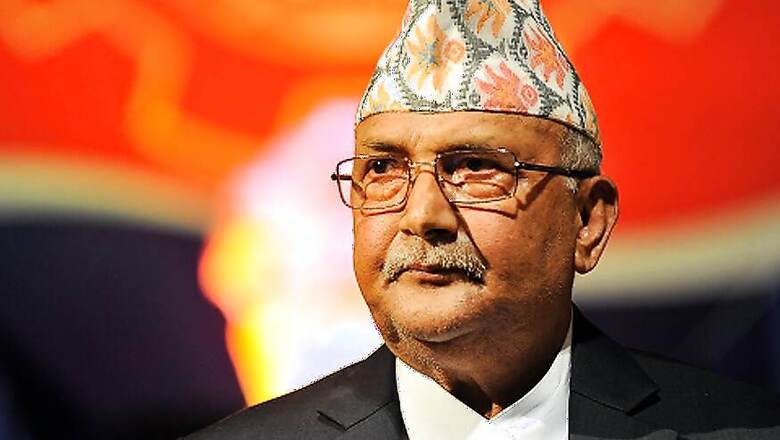
views
Nepal’s parliament is set to vote on Saturday on a new map of its border with India, underlining the Himalayan nation's determination to press its case in a land dispute that has strained ties with its giant neighbour.
Nepal published the revised map in May showing the sliver of land on its northwest tip as its territory, a move rejected by India, which controls the area and says the land belongs to it.
The government has tabled the new map in parliament, seeking to amend the constitution and remove the old version.
"A house meeting has been scheduled for Saturday when the amendment is expected to be debated and put to vote," parliamentary official Dashrath Dhamala had earlier said.
Nepal's Prime Minister KP Sharma Oli had said he has sought talks with India to seek to resolve the dispute over the small stretch of land, which includes the areas of Limpiyadhura, Lipulekh and Kalapani.
"We have told (them) that we want to resolve this through diplomatic talks ... And the solution is that our land should be returned to us," Oli said in parliament on Wednesday.
Oli claimed that India built a Kali temple, created "an artificial Kali river" and "encroached the Nepalese territory through deploying the Army" at Kalapani. The river defines the border between the two countries.
New Delhi has rejected Nepal's map when it was published in May, calling it a "unilateral act" that was not based on historical facts or evidence.
The ties between India and Nepal came under strain after Defence Minister Rajnath Singh inaugurated an 80-km-long strategically crucial road connecting the Lipulekh pass with Dharchula in Uttarakhand on May 8.
Nepal reacted sharply to the inauguration of the road claiming that it passed through Nepalese territory. India rejected the claim asserting that the road lies completely within its territory.
Nepalese officials say that Nepal had control over the area before 1962, when the India-China war took place. At that time India stationed its army seeking permission from then Nepalese rulers for temporary purpose, but it never removed its forces, they claim.
Although there are border issues in other areas such as Susta but the government has given priority to Lipulekh, Kalapani and Limpiyadhura as Nepali territories have not been captured by deploying army in other parts of its international border, Oli said in response to a question in Parliament.

















Comments
0 comment